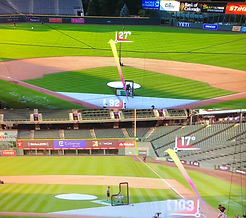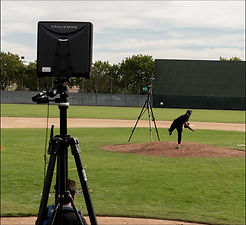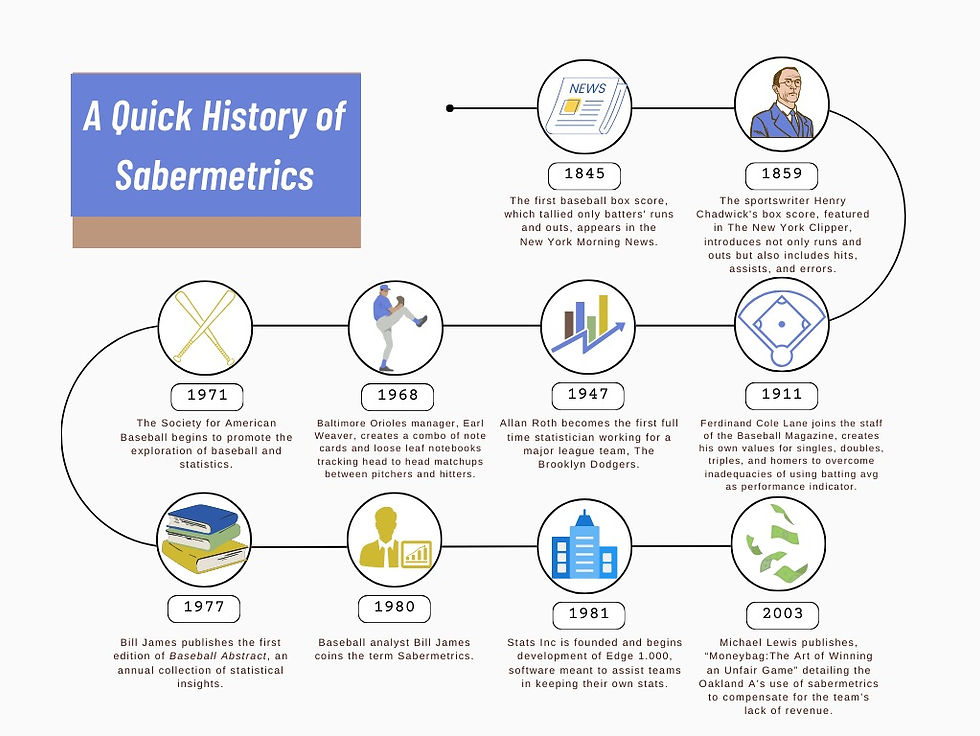Sabermetrics: An Introduction and Brief History
Advanced baseball analytics, also known as sabermetrics, is the empirical study of baseball that delves beyond traditional statistics, such as batting average or earned run average. Sabermetrics (named after the Society for American Baseball Research — SABR) helps baseball teams analyze the performances of their own players, opponents, and prospects. This enables teams to make informed predictions regarding matchups, player acquisition, and more based on previous data.

Statcast's pitching and hitting sabermetrics (David Adler)
Though the relationship between baseball and statistics dates back to the sport’s inception in the 19th century, sabermetrics can be traced back to 1977 when Bill James, a “sabermetrician” and member of the Society for American Baseball Research, published Baseball Abstract and introduced analytics to a mass audience for the first time.
After James introduced sabermetrics to the baseball world, advances in computer technology enabled the rise of sabermetrics in the 1980s and 1990s. The foundation of STATS, Inc. in 1981 introduced automated computer statkeeping. Computer experts in the baseball world also began writing computer programs, using languages such as IBM BASIC, that could compile statistics and simulate baseball outcomes.

Bill James (Bizuayehu Tesfaye)

An example of Statcast's capabilities
(Kristian Hernandez)

TrackMan's B1, a lighter, more portable version of their V3 (TrackMan)
Developments in hardware, in addition to software, in recent years have led baseball analytics to what we know it as today. Major League Baseball introduced Statcast league-wide in 2015 as the tracking technology that allows sabermetricians to collect all the measurements they need. Through 2019, Statcast relied on a combination of camera and radar systems to track the baseball and players. In 2020, MLB integrated Hawk-Eye technology, a high-powered camera system originally designed for providing instant replay in cricket. Each MLB ballpark features 12 Hawk-Eye cameras, improving the successful capture rate of balls in play from 89% to 99%.
A less expensive, and thus more common, alternative to Statcast and Hawk-Eye is TrackMan. TrackMan can be found at most minor league, amateur, and collegiate levels, and even at the high school game in some instances. TrackMan’s V3 Game Tracking, a device similar to a tablet like an iPad, can be installed at a ballpark and uses optically enhanced radar tracking (OERT) to capture both hitter (exit velocity, launch angle, distance, etc.) and pitcher measurements (velocity, spin rate, location, etc.). These data points are captured for every pitch of a baseball game and sent to TrackMan’s accompanying app. TrackMan is used at UCSB.
Sabermetrics’ popularity breached the realm of baseball in the early 21st century with the publication of Michael Lewis’ Moneyball. The book recounts how Billy Beane, general manager of the Oakland Athletics, used sabermetrics to assemble a competitive baseball team despite a restrictively small budget in 2002. Beane’s A’s, despite a slow start, won 103 games, qualified for the postseason, and won their division that season using his approach. The book was adapted into a film in 2011 that starred Brad Pitt and Jonah Hill.
With the near-infinite number of variables that can determine the outcome of a play in a baseball game, sabermetrics truly allows statisticians to cover all their bases.

From left to right: Jonah Hill, Brad Pitt, and Billy Beane
(Brooks Vernon)

